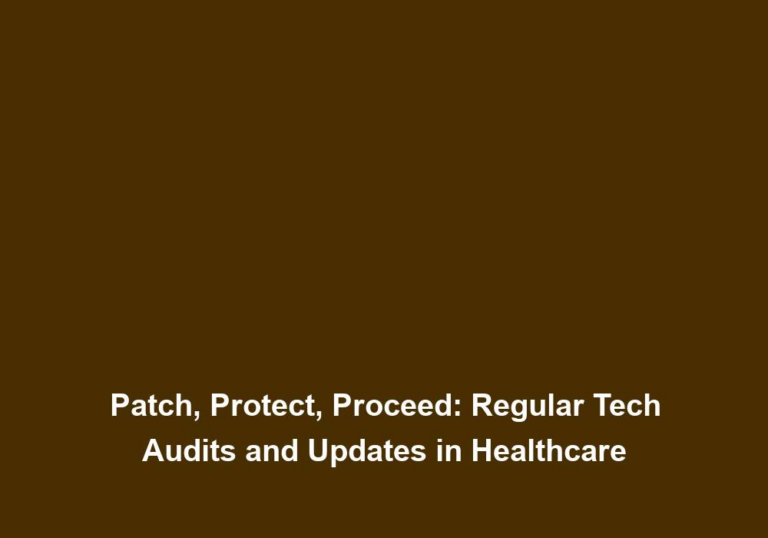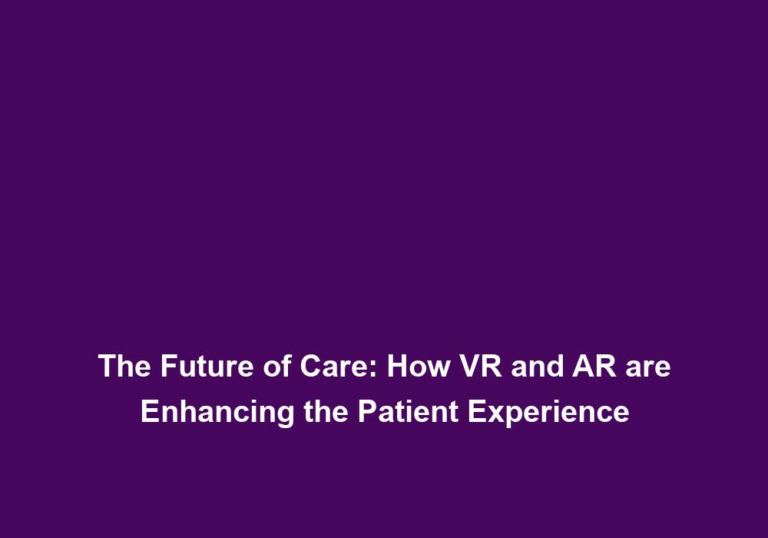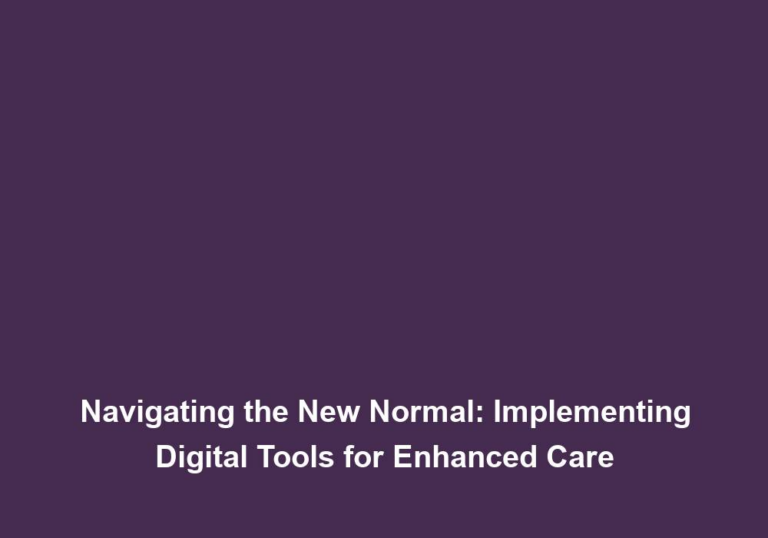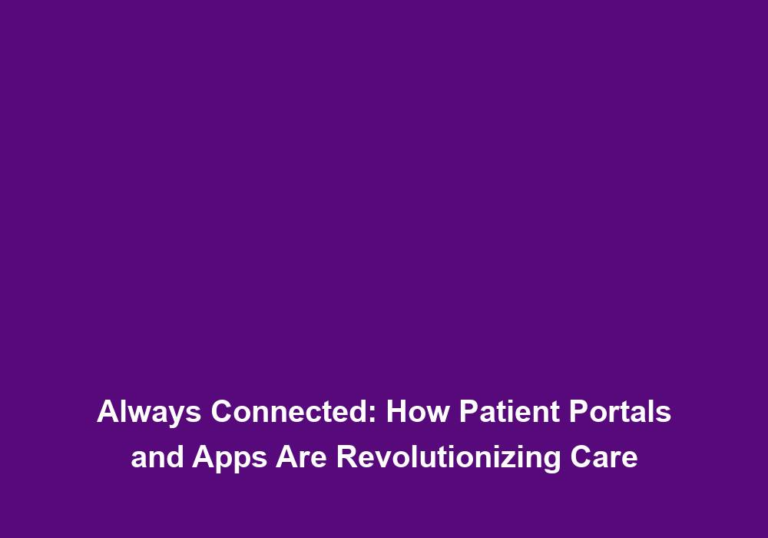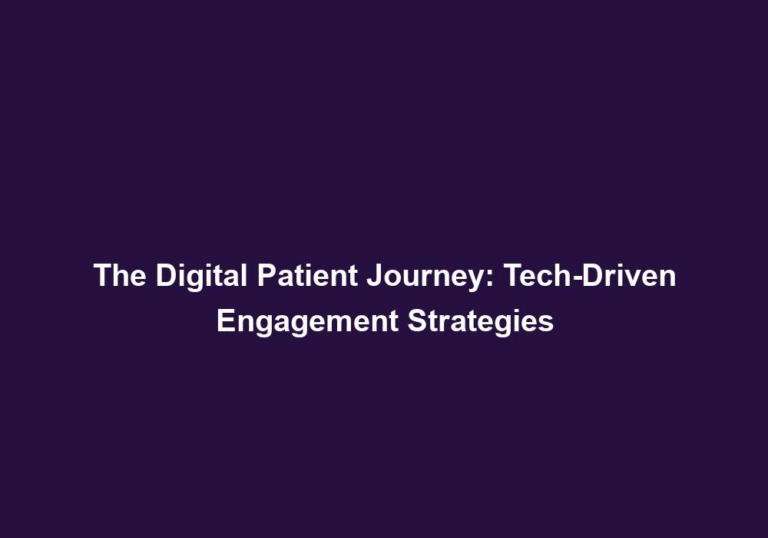Guarding the Gates: Best Practices for Cybersecurity in Healthcare
In today’s digital age, the importance of cybersecurity in the healthcare industry cannot be overstated. As technology continues to advance and healthcare organizations increasingly rely on electronic systems to store and share sensitive patient information, it has become imperative to implement robust security measures to protect against potential cyber threats. In this article, we will explore some best practices for cybersecurity in healthcare to ensure the safety and privacy of patient data.
Understanding the Cybersecurity Landscape in Healthcare
Before delving into the best practices, it is essential to understand the unique cybersecurity challenges faced by the healthcare industry. Healthcare organizations store a wealth of confidential patient information, including medical records, insurance details, and personally identifiable information. This data is highly valuable to cybercriminals, making healthcare organizations prime targets for attacks.
Moreover, the interconnected nature of healthcare systems, with numerous devices, applications, and networks often lacking adequate security measures, creates numerous entry points for cyber threats. These threats can range from ransomware attacks to data breaches, potentially compromising patient safety, damaging reputations, and incurring significant financial losses.
The Value of Patient Data
Healthcare organizations possess a vast amount of patient data, which is highly valuable on the black market. Medical records, insurance details, and personally identifiable information (PII) can be sold for significant sums of money, making healthcare organizations prime targets for cybercriminals. Additionally, patient data can be used for identity theft, fraud, or even extortion. Therefore, it is essential for healthcare organizations to prioritize the protection of this data through robust cybersecurity measures.
Vulnerabilities in Healthcare Systems
Healthcare systems, due to their interconnected nature and reliance on technology, often contain vulnerabilities that cybercriminals can exploit. Outdated software, applications, and systems can have security vulnerabilities that allow unauthorized access. Furthermore, devices such as medical equipment, wearables, and IoT devices may lack adequate security measures, making them easy targets for cyberattacks. It is crucial for healthcare organizations to identify and address these vulnerabilities to ensure the overall security of their systems and networks.
Regulatory Compliance and Industry Standards
The healthcare industry is subject to various regulatory requirements and industry standards regarding the security and privacy of patient data. Compliance with regulations like the Health Insurance Portability and Accountability Act (HIPAA) is crucial for healthcare organizations. Non-compliance can lead to severe legal consequences and damage to reputation. Therefore, it is vital for healthcare organizations to understand and adhere to these regulations, implementing robust cybersecurity measures to protect patient data and maintain compliance.
Best Practices for Cybersecurity in Healthcare
-
Implement a comprehensive cybersecurity framework: To effectively protect patient data, healthcare organizations should develop and implement a comprehensive cybersecurity framework. This framework should align with industry standards and best practices and encompass policies, procedures, and guidelines to address various aspects of cybersecurity. It should include risk assessment methodologies, incident response protocols, access controls, and encryption practices.
-
Regularly update and patch systems: Keeping all software, applications, and systems up to date with the latest security patches is crucial to prevent cyberattacks. Healthcare organizations should establish a process to regularly check for updates from software vendors and promptly apply them. By doing so, they can address known vulnerabilities and prevent exploitation by cybercriminals.
-
Train employees on cybersecurity awareness: Human error is often a significant factor in cyber incidents. Therefore, it is essential to educate and train all staff members on cybersecurity best practices. This training should include how to identify and respond to phishing emails, suspicious websites, and social engineering attempts. Regular reinforcement of this training will help ensure that employees remain aware and vigilant against potential cyber threats.
-
Implement strong access controls: Securing access to sensitive information is paramount in healthcare organizations. Implementing multi-factor authentication (MFA) and strong passwords adds an extra layer of security. Additionally, healthcare organizations should adopt the principle of least privilege, granting access privileges only to employees who require them for their job roles. Regularly reviewing and revoking unnecessary access rights further reduces the risk of unauthorized access.
-
Encrypt data at rest and in transit: Encryption is a vital component of data protection in healthcare. Healthcare organizations should ensure that all sensitive patient data is encrypted both at rest (stored on servers or devices) and in transit (being transmitted across networks). Encryption provides an additional layer of protection, making it harder for unauthorized individuals to access and misuse the data.
-
Regularly backup data: Data backups are critical for recovering from cyber incidents or system failures. Healthcare organizations should perform regular backups of critical data to ensure its availability and integrity. It is advisable to store backups in secure, off-site locations to minimize the risk of data loss in the event of a cyberattack or natural disaster.
-
Monitor systems for suspicious activity: Implementation of robust monitoring tools and techniques is essential to detect and respond to unusual or suspicious activity. This includes monitoring network traffic, system logs, and user behavior to identify potential threats and promptly take action. Healthcare organizations should consider investing in advanced threat detection systems and Security Information and Event Management (SIEM) solutions to enhance their monitoring capabilities.
-
Conduct regular risk assessments: Regularly assessing the organization’s cybersecurity posture through comprehensive risk assessments is crucial to identify vulnerabilities and prioritize security measures. These risk assessments should evaluate the potential impact of threats and the likelihood of their occurrence. It is advisable to engage experienced professionals or external auditors to conduct these assessments for an unbiased and thorough evaluation.
-
Establish an incident response plan: Having a well-defined incident response plan is essential for healthcare organizations to effectively handle cyber incidents. This plan should outline the steps to be taken in the event of a cyber incident, including reporting procedures, damage containment, root cause investigation, and system/data recovery. Regularly testing and updating the incident response plan will ensure its effectiveness in mitigating the impact of cyber incidents.
-
Engage with cybersecurity experts: Collaborating with cybersecurity experts who specialize in the healthcare industry can provide valuable insights and assistance in enhancing cybersecurity measures. These experts can conduct penetration testing to identify vulnerabilities, offer guidance on implementing advanced security technologies, and provide ongoing support to combat evolving cyber threats. Engaging cybersecurity experts helps healthcare organizations stay ahead of the curve and ensure the highest level of protection for patient data.
Conclusion
Cybersecurity in healthcare is of paramount concern, requiring constant vigilance and proactive measures. By implementing the best practices outlined in this article, healthcare organizations can significantly reduce the risk of cyberattacks, protect patient data, and safeguard their reputation. It is important to remember that cybersecurity is an ongoing process, and staying updated with the latest threats and security measures is crucial to ensure the continuous safety of sensitive information in the healthcare industry.



